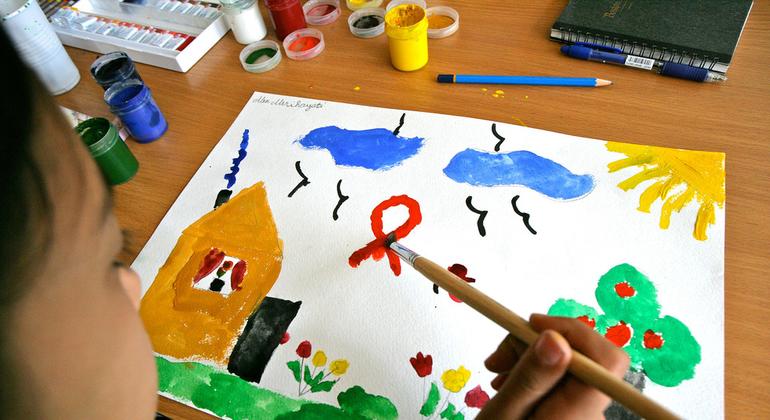The new Global Alliance for Ending AIDS in Children by 2030, made up of UN agencies, civil society groups, governments and international partners, was announced at the landmark International AIDS Conference, which comes to a close in Montréal, Canada, on Tuesday.
‘Healthy, informed generation’
Addressing the conference, Limpho Nteko from Lesotho shared her journey from a surprise HIV diagnosis to pioneering the women-led mothers2mothers programme to combat gestational transmission of HIV. Pregnant when diagnosed, Ms. Nteko highlighted the importance of community leadership in combating HIV:
“To succeed, we need a healthy, informed generation of young people who feel free to talk about HIV, and to get the services and support they need to protect themselves and their children from HIV”, she told delegates.
“mothers2mothers has achieved virtual elimination of mother-to-child transmission of HIV for our enrolled clients for eight consecutive years – showing what is possible when we let women and communities create solutions tailored to their realities.”
Ms. Netko’s emphasis on community leadership will now be backed by the resources of an international coalition.
Four pillars for action
Together, stakeholders in the alliance have identified four pillars of collective action:
- Close the treatment gap among breastfeeding adolescent girls and women living with HIV and optimize the continuity of treatment.
- Prevent and detect new HIV infections among pregnant and breastfeeding adolescent girls and women.
- Promote accessible testing, optimized treatment, and comprehensive care for infants, children, and adolescents exposed to and living with HIV.
- Address gender equality, and the social and structural barriers that hinder access to services.
The potential success of the alliance rests on its unifying nature. UNAIDS Executive Director Winnie Byanyima argues that, “by bringing together new improved medicines, new political commitment, and the determined activism of communities, we can be the generation who end AIDS in children. We can win this – but we can only win together.”
Only through collaboration at all levels of society, can holistic solutions be created to effectively prevent further HIV transmission, said UNAIDS.
By localizing solutions, while mobilizing worldwide commitment and resources, the alliance aims to stimulate innovation and hone the technical excellence needed to solve this pressing issue.



